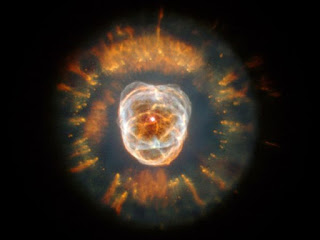 |
| Image Source: National Geographic |
Topics: Astronomy, Astrophysics, General Relativity, Neutron Stars
In this talk Dr Victoria Kaspi of McGill University, an American-Canadian astrophysicist, who primarily investigates pulsars and neutron stars, discuses the frontiers of neutron star research. Neutron stars — compact exotic objects that appear due to gravitational collapse of a massive star after a supernova — are not only of interest to astronomers. Being made nearly entirely out of neutrons, they offer a chance to investigate particle theory at high energies making them objects of special interest for particle physicists as well. Physics Database
Neutron stars are ancient remnants of stars that have reached the end of their evolutionary journey through space and time.
These interesting objects are born from once-large stars that grew to four to eight times the size of our own sun before exploding in catastrophic supernovae. After such an explosion blows a star's outer layers into space, the core remains—but it no longer produces nuclear fusion. With no outward pressure from fusion to counterbalance gravity's inward pull, the star condenses and collapses in upon itself.
Despite their small diameters—about 12.5 miles (20 kilometers)—neutron stars boast nearly 1.5 times the mass of our sun, and are thus incredibly dense. Just a sugar cube of neutron star matter would weigh about one hundred million tons on Earth.
National Geographic: Neutron Stars
Comments